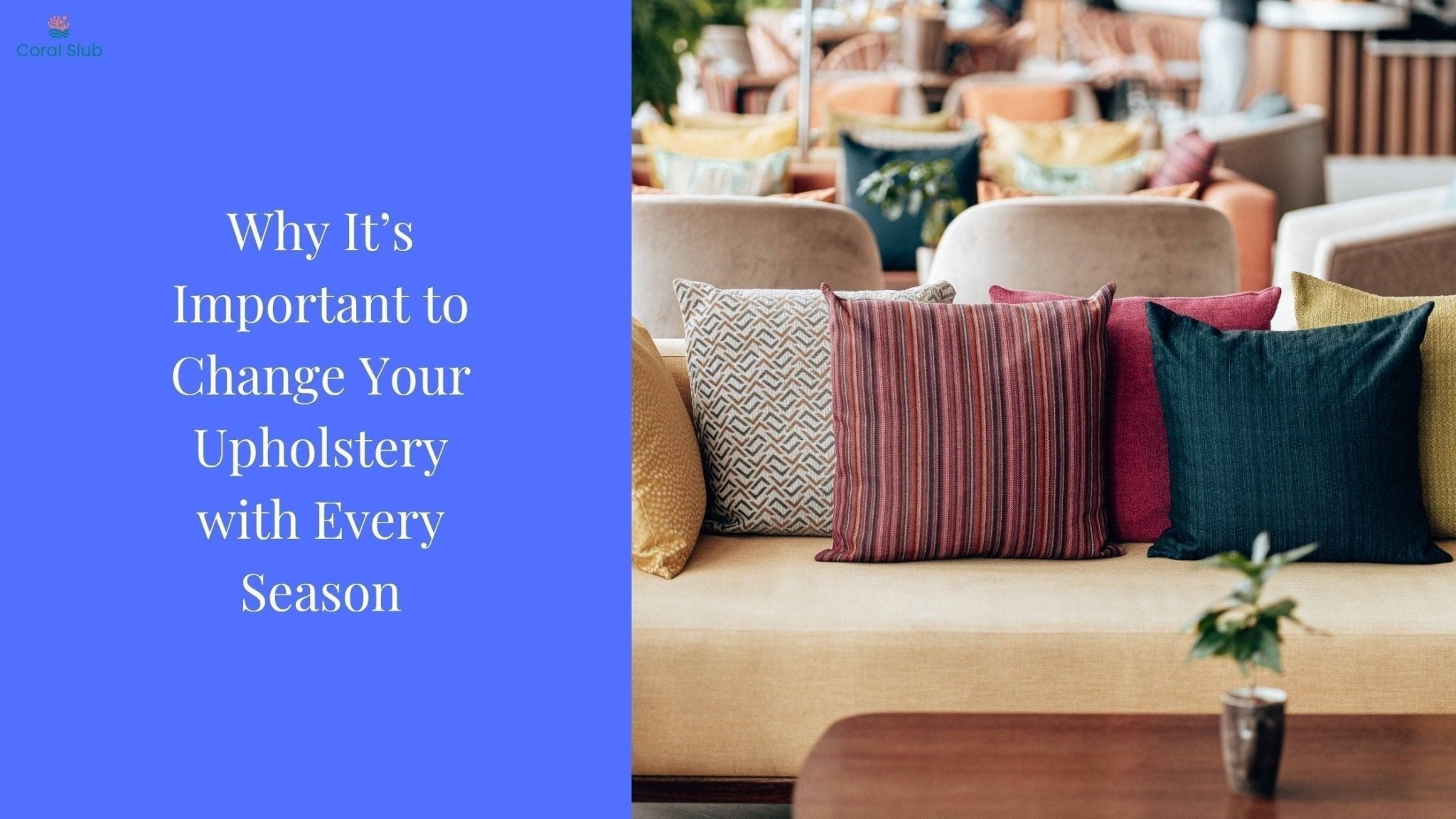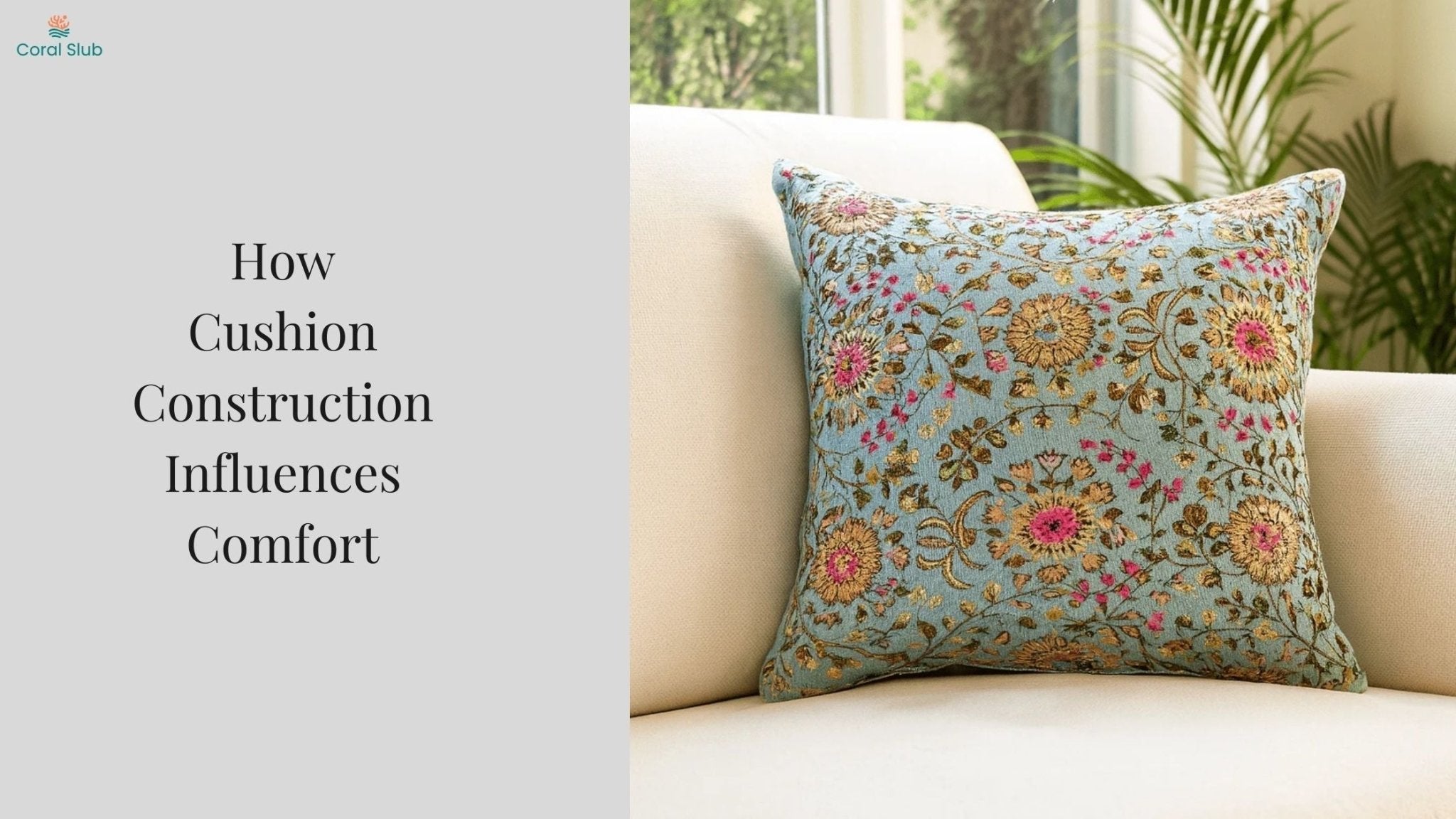Our homes are like living, breathing spaces. They respond to light, temperature, and mood just like we do. Yet, one detail often overlooked in seasonal styling is upholstery. From the sofa you sink into after a long day to the dining chairs that host countless memories, upholstery sets the tone for how your home feels throughout the year.
Changing upholstery with the seasons isn’t about following trends; it’s about comfort, freshness, and harmony. As the light shifts and temperatures fluctuate, the fabrics and colours around us can make a big difference in how a room looks and feels.
How Seasonal Upholstery Impacts Comfort

Every fabric behaves differently with temperature. In India’s warm months, light materials like cotton and linen allow your furniture to breathe, keeping interiors cool and airy. But when winter approaches, those same materials can feel too crisp or cold against the skin. That’s when plush, textured fabrics like suede, velvet, or chenille step in, offering warmth and a sense of coziness.
Switching upholstery seasonally creates comfort that’s in tune with the weather. A soft velvet sofa cover or suede cushion instantly adds depth and warmth to a room, making it the perfect setting for long winter evenings. When summer returns, lighter covers bring back freshness and space to breathe.
Hygiene and Maintenance Benefits

Beyond aesthetics, there’s a practical reason to rotate upholstery: it's hygiene. Fabric absorbs dust, humidity, and even odours over time. Changing or refreshing upholstery prevents the buildup of allergens, especially important in cities where air quality fluctuates throughout the year.
Seasonal change also gives you the opportunity to deep-clean existing upholstery before storing it away. Lighter fabrics benefit from washing and sun exposure, while heavier winter materials need gentle vacuuming and protective storage. This routine keeps your home feeling clean, healthy, and inviting all year round.
How Changing Upholstery Refreshes a Room Instantly

Sometimes, a simple fabric swap can make an entire room feel new. Imagine replacing light beige summer linen cushions with deep burgundy suede ones, or switching pastel floral prints for earthy geometric weaves. The transformation is immediate, without repainting, rearranging, or major redecorating.
Seasonal upholstery changes are a smart, affordable way to refresh interiors without investing in new furniture. By rotating colours and textures, you can align your home’s mood with nature’s rhythm, bright and breezy in summer, soft and grounded in winter.
Adapting Colours and Textures to Seasonal Moods

Every season carries its own palette. Summer is all about whites, creams, and pastel tones that keep spaces open and breezy. Monsoon brings a muted charm with greys, greens, and soft blues. Winter calls for warmth for example ochres, rusts, plums, and deep browns.
Matching your upholstery colours to these seasonal tones adds emotional depth to your interiors. You’ll find your living spaces feeling lighter and more positive simply because the colours mirror what’s happening outside. Natural materials also respond beautifully to these transitions, letting textures evolve gracefully with light and time.
Sustainability Through Rotation

Contrary to what it may sound like, changing upholstery seasonally can actually be a sustainable practice. Instead of overusing one set of fabric covers throughout the year, rotating them reduces wear and extends lifespan. It encourages thoughtful consumption investing in fewer but better-quality textiles that are stored and reused carefully.
You can even repurpose older fabrics creatively. Turn previous cushion covers into runners or use leftover material for accent patches on stools and poufs. Seasonal rotation keeps your décor dynamic without waste, blending aesthetics with responsibility.
How to Get Started with Seasonal Upholstery
If you’re new to this practice, start small. Focus on the pieces that make the biggest visual impact like cushions, chair covers, and sofa throws. Keep two contrasting sets for the year: one in light, breathable cottons or linens for summer, and another in rich, tactile fabrics like suede or velvet for winter.
Pay attention to tone and balance. Instead of redoing everything, layer seasonal touches gradually a new runner on your dining table, deeper curtains in the living room, or textured cushions for the bed. These changes build up subtly, transforming your home’s atmosphere in an organic way.
The Beauty of Seasonal Change

Because when your space adapts to the rhythm of the seasons, it doesn’t just look beautiful it feels alive.








